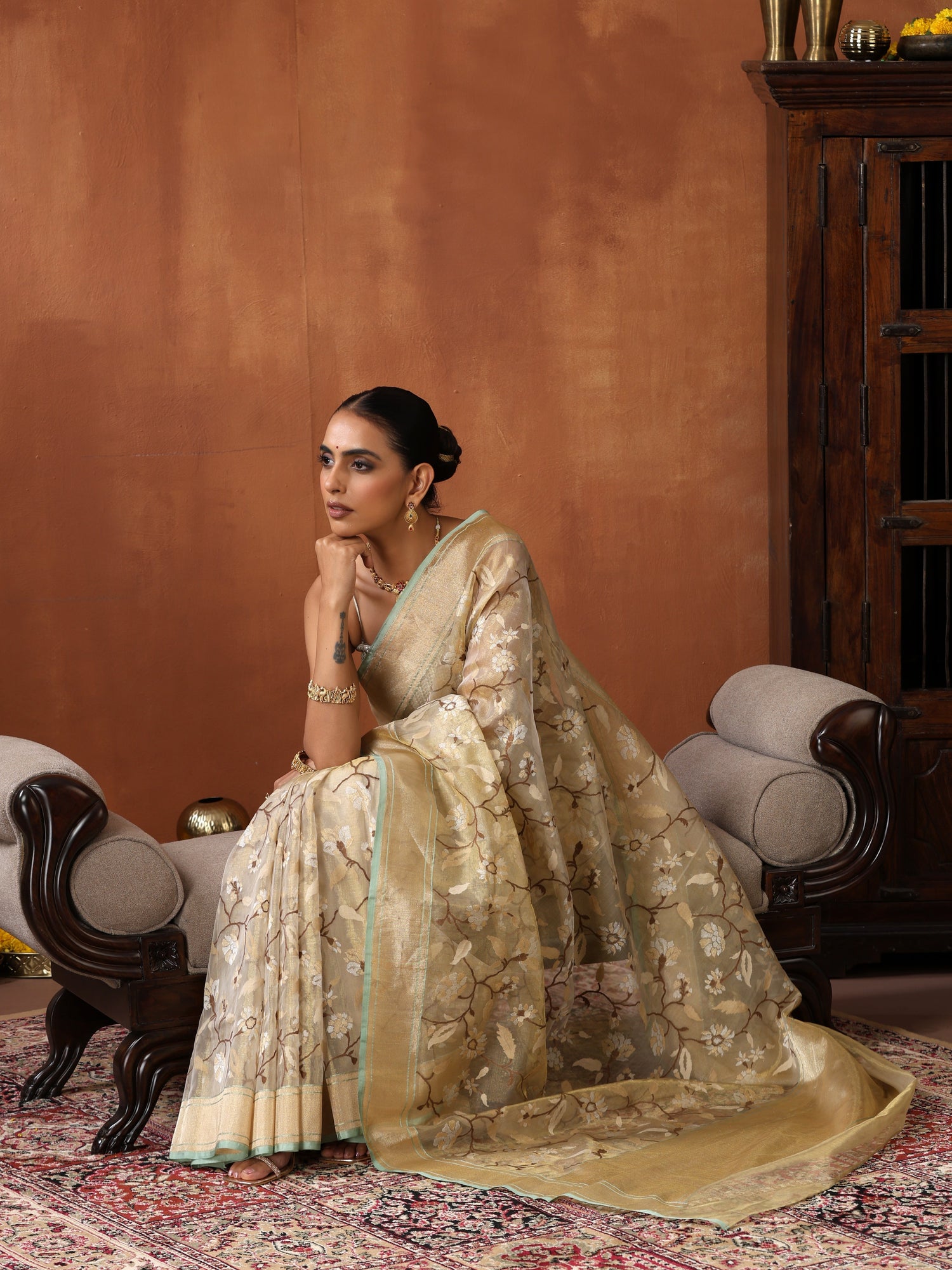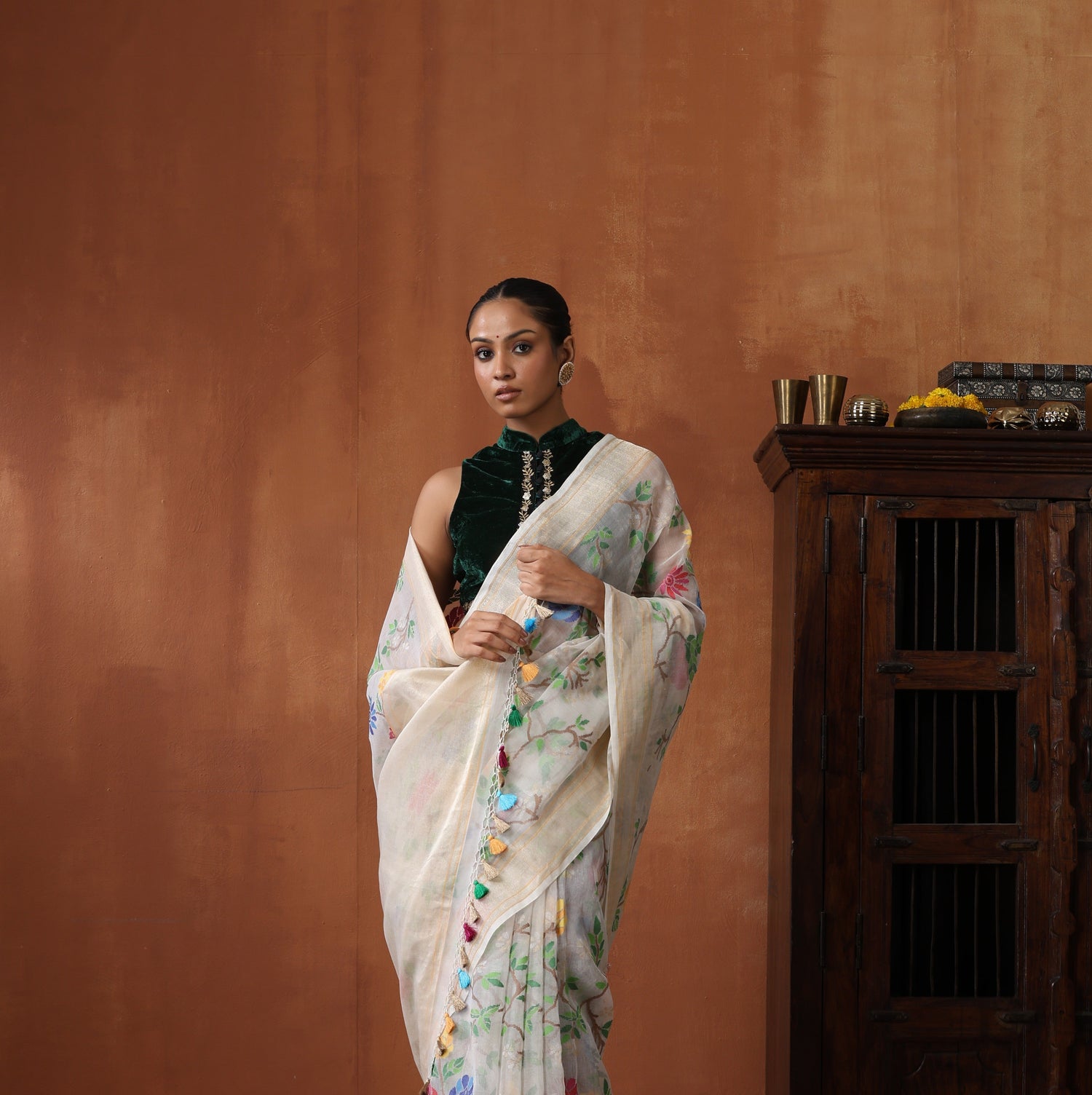Happy New Year and a warm welcome to all our readers to 2020 edition of Khinkhwab Diaries!!
As you all know, the art of weaving in India has its own journey and story. We the team of Khinkhwab, constantly continue to explore the finer details of the weaves in India and present to you the facts and flavors of every culture that came as well as belong to this land.
Today we bring to you some of the finest weaves of Central India, which are very popular and in vogue and fashion like Ikat, Patan Patola, Pichwai, Pochampally, etc.
Ikat Silk
One of the dynamic weaving style from the state of Orissa which is not only famous for the temple cities, culture, and tradition, but also this stunning silk Ikat which is largely used in silk sarees and fabrics
Ikat has been one of the popular dyeing technique used to pattern textiles that employ resist dyeing to on the yarn prior to the actual dyeing and weaving of the fabric. The term “Ikat” simply refers to tie and bind.
This technique has its origin from Indonesia and was introduced into European textile vocabulary back in the early 20th century when Dutch scholars begin to study the rich textile traditions. It is most prevalent in Indonesia, India, Japan, South America, Central, and North America, ikat is still common in Argentina, Bolivia, Ecuador, Guatemala, and Mexico.
Apart from Orissa, in India, Ikat is prevalent in the states of Gujarat, Andhra Pradesh. Ikat from Gujarat is known as Bandha and has been one of the most practiced craft of this state.
In Andhra Pradesh, this weaving is characterized by the obscure process of oil treating the yarn. Weaving continues in this state in Pochampally, Choutuppal areas, where the skilled weaves continue to reside.
Read this article to know about the fashion and history of Ikat:
https://fashion-history.lovetoknow.com/fabrics-fibers/ikat

Types of Ikat
Ikat fabrics have always been popular for their distinct style and unparalleled beauty.If you have ever used one, you will know how unique they are.
There are three different Ikat weaving techniques. These are warp ikat, weft ikat, and double ikat. Let's take a look at what each of them are
- Warp Ikat
In this IKat technique, the weft yarns are all dyed using a solid color and only the warp yarns are ikat dyed. So here the patterns are clearly visible when the threads are wound around the loom

- Weft Ikat
This technique is more difficult than the warp Ikat as the pattern will be formed only when the weaving progresses.That typically means the weaver has to constantly center and readjust the yarns to ensure patterns are formed correctly.

- Double Ikat
This is the most complicated technique out of the three types. This is where both the warp and weft threads are resist-dyed prior to weaving. This technique requires advanced skills, takes time and hence most expensive.

Patola is a double Ikat sari, usually made from silk made in Patan, Gujarat, India. The word patola is the plural form; the singular is Patolu. They are very expensive, once worn only by those belonging to royal and aristocratic families. History says Silk weavers of the Salvi caste from the states of Karnataka and Maharashtra chose Gujarat as the home for their renowned patola fabric.

Source: Wikipedia
Ikat in Andhra Pradesh - Pochampally
Pochampally is another double ikat woven sari, usually made from silk made from Telangana, India. They have traditional geometric patterns in the Ikat style of dyeing. The intricate geometric designs find their way into sarees and dress materials.
Today this Silk City, which is more of a cottage industry, is home to more than 10,000 weaving families in 100 villages. The fabric is marketed through the cooperative society, many other linked organizations, the master weavers and the business houses

Pichwai
Another form of weaving that evolved in the state of Rajasthan is Pichwai, which is made by the Rabari community of Rajasthan and Gujarat. This very colorful style is usually painted and traditionally used only for garments, but now it can be found on bags, accessories, home furnishings, etc. Mirrors of all shapes and sizes are incorporated in the weave, as a result of the belief that mirrors protect from evil spirits. Designs include not only flowers and fruit and animals such as parrots and elephants, but also temples, women carrying pots, etc.





